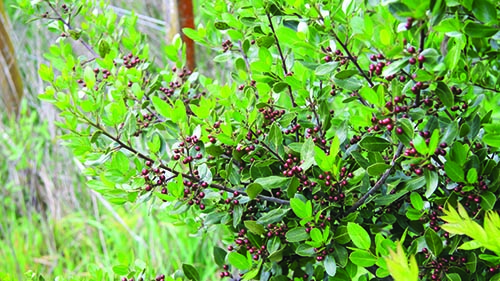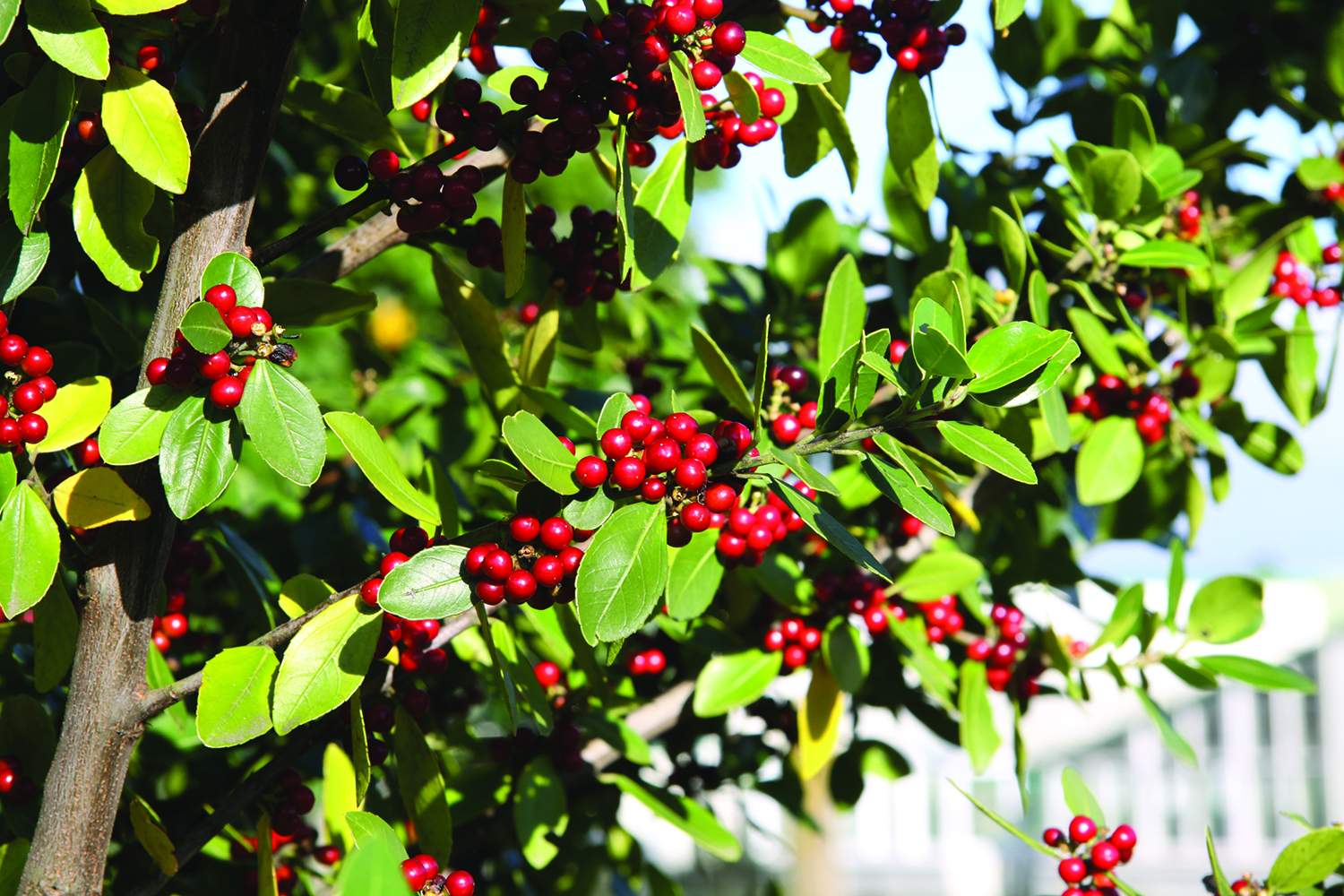| Management programme |
| Eradication |
| Objectives |
| Reduce the level of infestation of evergreen buckthorn within the Waikato region to zero density to prevent adverse effects and impacts. |
| Impacts |
| Biodiversity, social and cultural wellbeing, amenity/recreation |
Evergreen buckthorn, native to the Mediterranean, is a hardy evergreen shrub or tree originally introduced to New Zealand as an ornamental plant. It has separate male and female plants which have slowed its spread to date. It can tolerate a wide range of environmental conditions and where it establishes it can quickly take over, changing the structure of native ecosystems. It’s a serious threat to coastal areas as it can form thick stands and impede native plant regeneration.

What does it look like?
Evergreen buckthorn is a shrub or small tree which grows 5m-10m tall (although can be less than 1m tall on exposed sites). It can be distinguished from native species by the two small indents at the base of the back of the leaf and the ‘buckthorns’ (matching bumps) on the top of its leaves.
Flowers
- Flowers are small (3mm-4mm in diameter), green and fragrant.
- They have no petals and grow in small clusters.
- Flowering from May to November.
Fruit/seeds
- Individual plants are usually separate gender (male or female).
- Fruit (berries) are up to 7mm long.
- Berries grow in clusters and are a glossy dark red in colour.
- Berries form a stone and turn black when ripe.
Leaves/stems
- The leathery leaves vary in appearance, but are usually dark green, glossy on top, oval and up to 6cm long.
- Leaf edges can be smooth or have blunt or sharp teeth.
- Young shoots are angular, hairy, and usually purple.
Why is it a pest?
Evergreen buckthorn poses a serious threat to coastal vegetation. It competes strongly with native coastal species and can restrict access to recreational areas.
Evergreen buckthorn’s tolerance of drought, shade, frost, poorly drained soils and exposed sites means it can colonise a wide range of habitats, including coastal cliffs and rocky outcrops, stream and forest margins and disturbed forests and plantation areas. It can form dense colonies, altering the structure of native ecosystems in a short period of time.
Common in Auckland and on the islands of the Hauraki Gulf, evergreen buckthorn is limited in the Waikato region to only a few localised infestations in Hamilton, Te Kauwhata, Raglan and on the Coromandel Peninsula. It is important to identify and destroy any infestations of this pest plant to prevent it from spreading further.
Control methods
Do not attempt to control evergreen buckthorn yourself.
Waikato Regional Council is responsible for controlling evergreen buckthorn and it is illegal for anyone else to disturb, remove or transport evergreen buckthorn plants.
More information
Advice
For additional information and advice on evergreen buckthorn, call our pest plant staff on freephone 0800 800 401.
Publications
The following publications are available for download or from Waikato Regional Council. Contact us to request a copy (freephone 0800 800 401).






To ask for help or report a problem, contact us
Tell us how we can improve the information on this page. (optional)